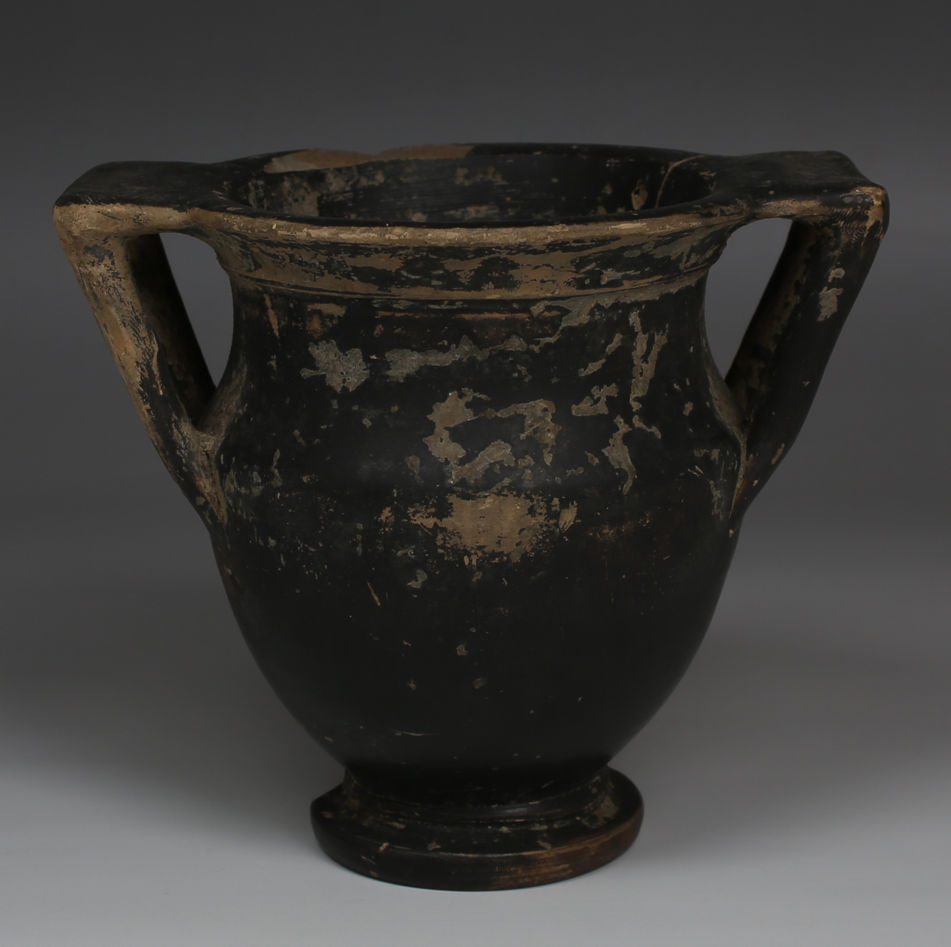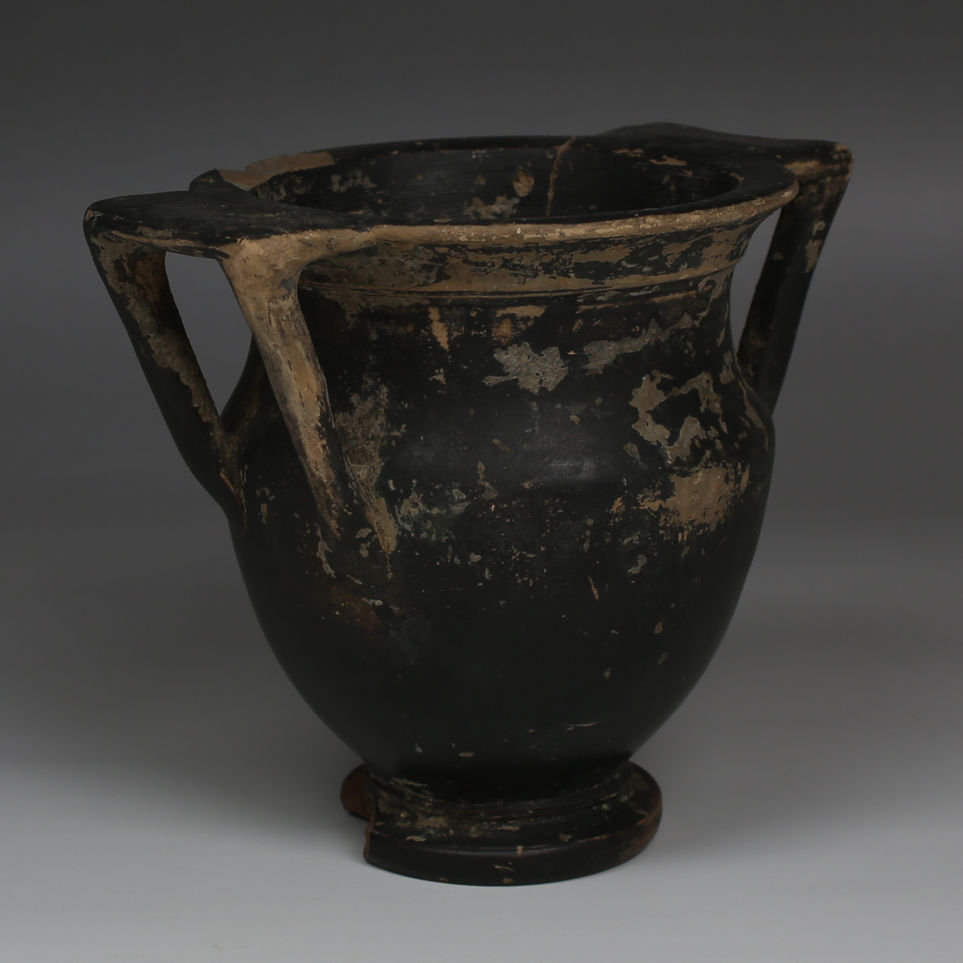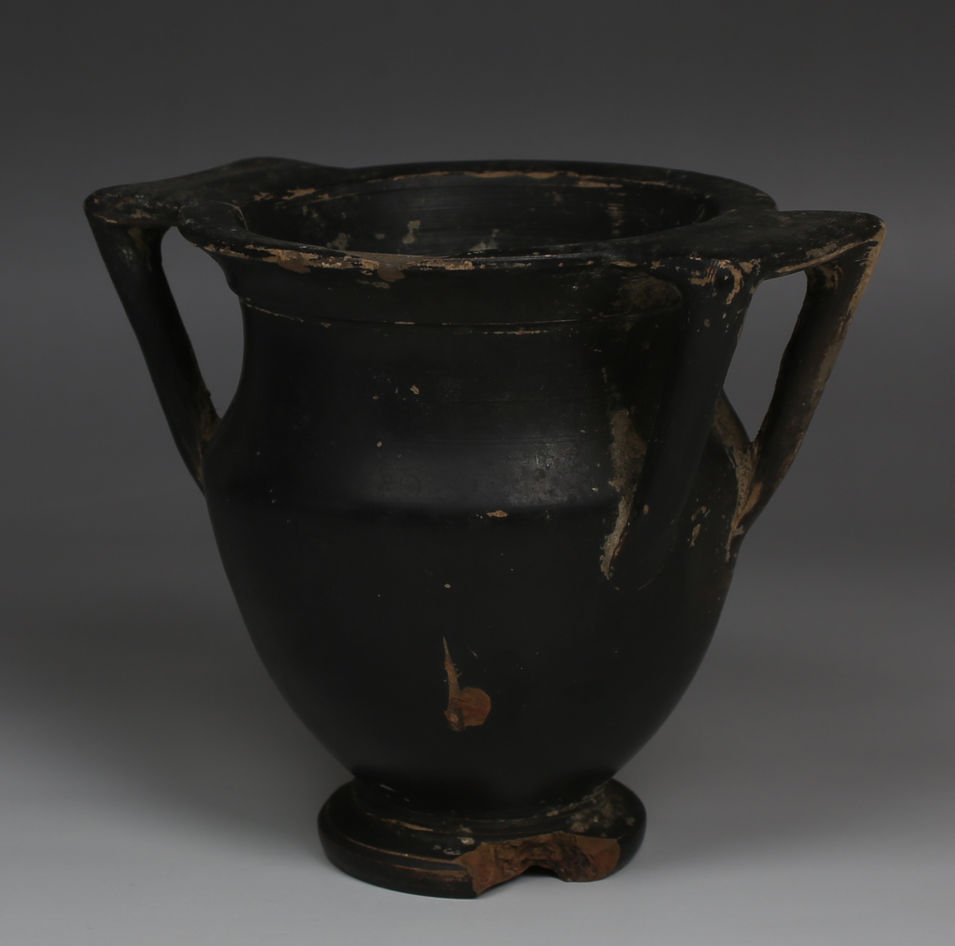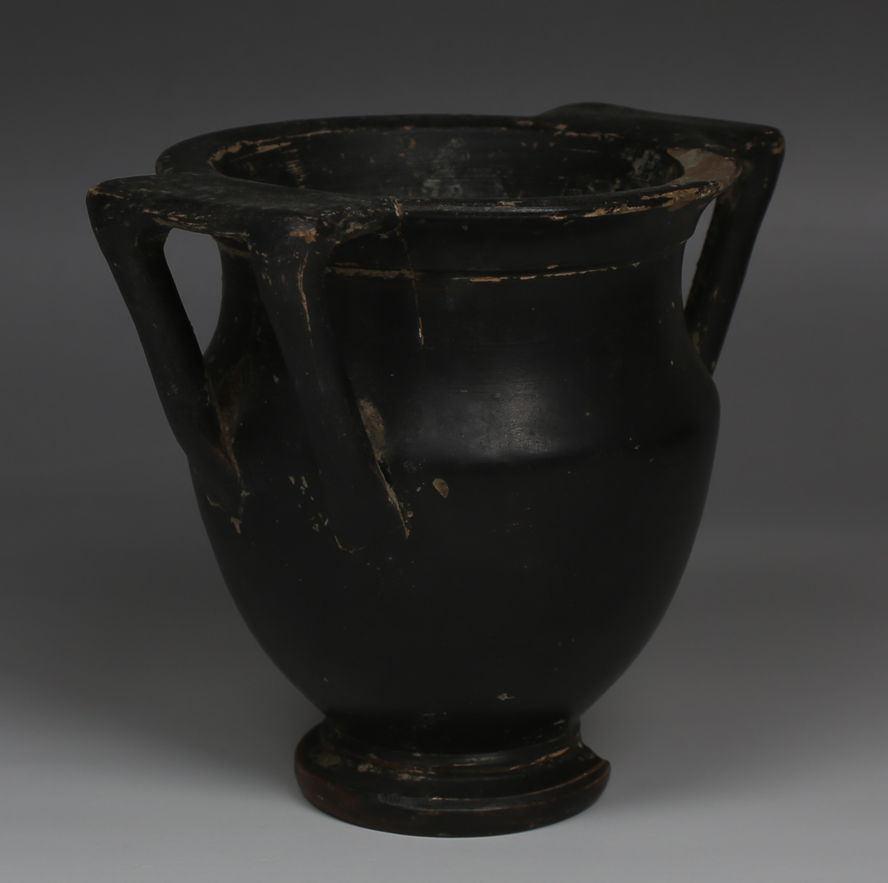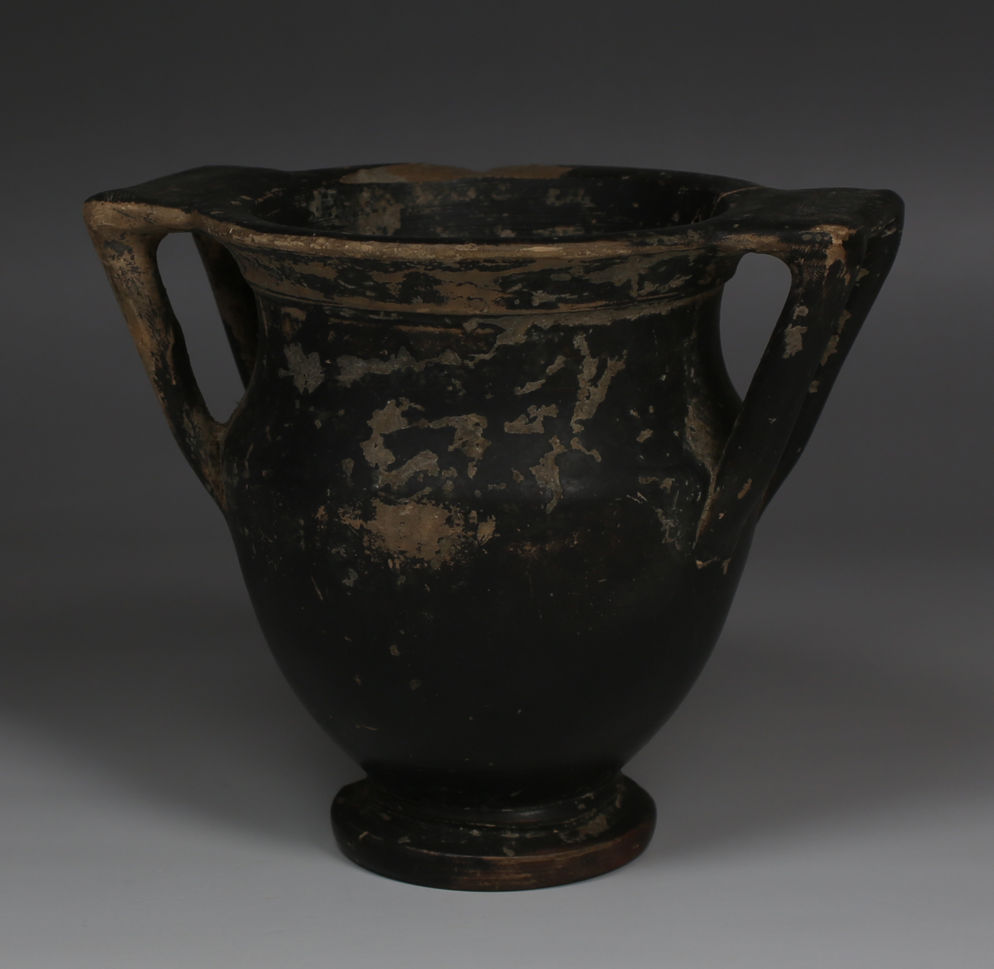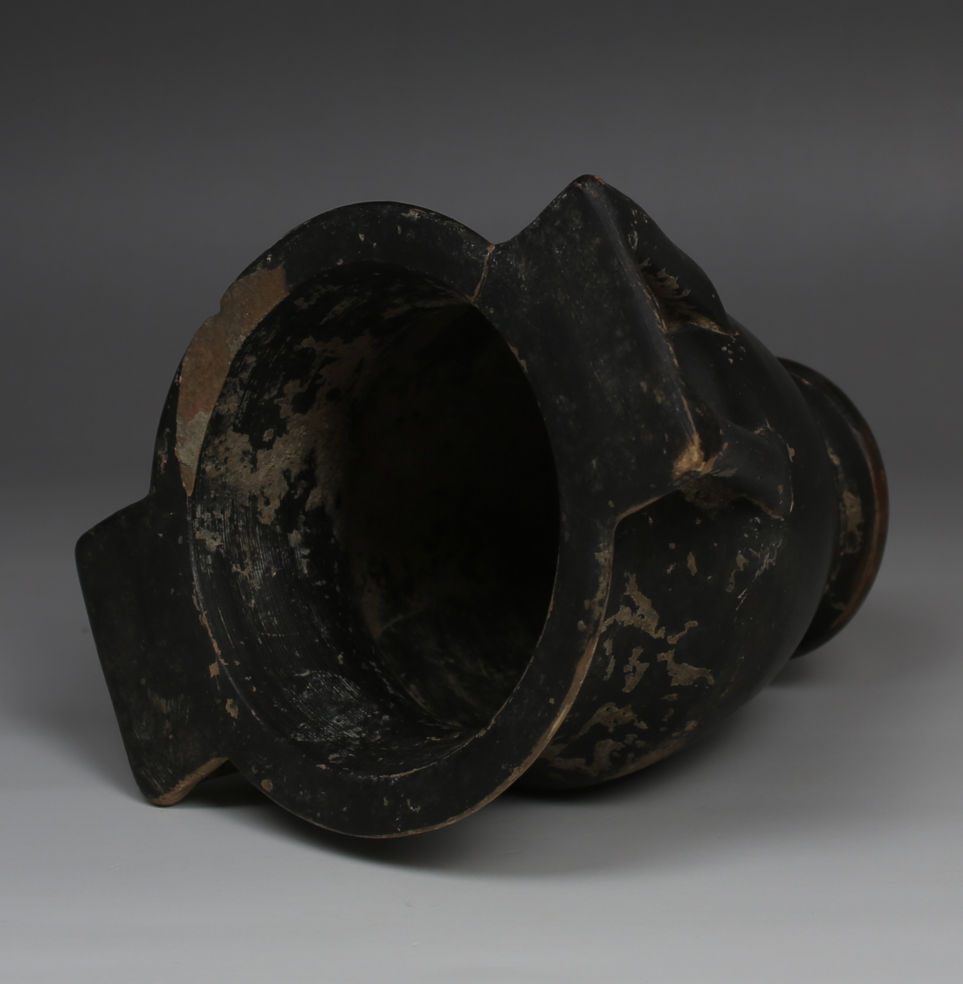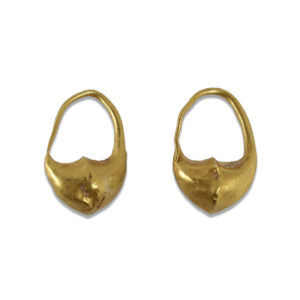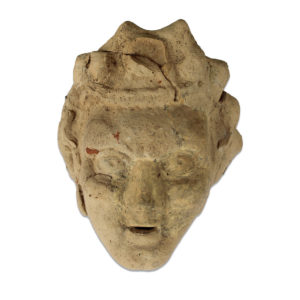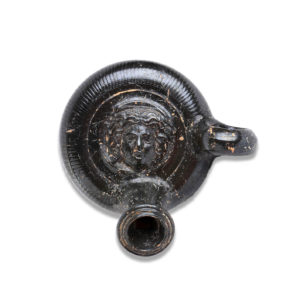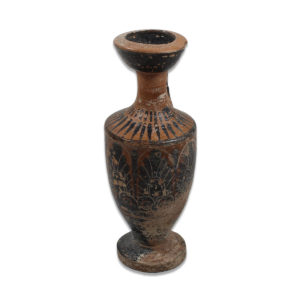Description
| ITEM | Column krater |
| MATERIAL | Pottery |
| CULTURE | Greek |
| PERIOD | 4th Century B.C |
| DIMENSIONS | 100 mm x 112 mm |
| CONDITION | Good condition |
| PROVENANCE | Ex French private collection, J.H.E. Demangeon, 1904 – 1992, acquired in 1989 from M. Demangeon |
The column krater is a distinctive type of ancient Greek pottery used primarily for mixing wine and water during symposia, or drinking parties. Characterized by its large size and wide mouth, the column krater often features a tall, cylindrical body with handles on either side, which made it easier to pour and mix liquids. The name “column krater” derives from its column-like shape, a feature that differentiates it from other types of kraters, such as the bell krater and the calyx krater. The form of the column krater made it an ideal vessel for communal drinking, reflecting the importance of social gatherings in Greek culture.
The decorative style of column kraters varied over time, reflecting different artistic trends in Greek pottery. Early examples from the Geometric and Orientalizing periods typically showcased simple, abstract patterns and motifs. By the Archaic and Classical periods, however, column kraters often featured elaborate scenes depicting mythological narratives, athletic competitions, and everyday life. The red-figure technique, which emerged around the 530 BCE, allowed artists to depict figures in greater detail and with more naturalistic poses compared to the earlier black-figure technique. This shift in artistic style enhanced the visual appeal and storytelling potential of the kraters.
Column kraters were more than just functional vessels; they were also significant as artistic and ceremonial objects. Their large size and ornate decorations made them prominent features at symposia, where they served as focal points for rituals and social interaction.


